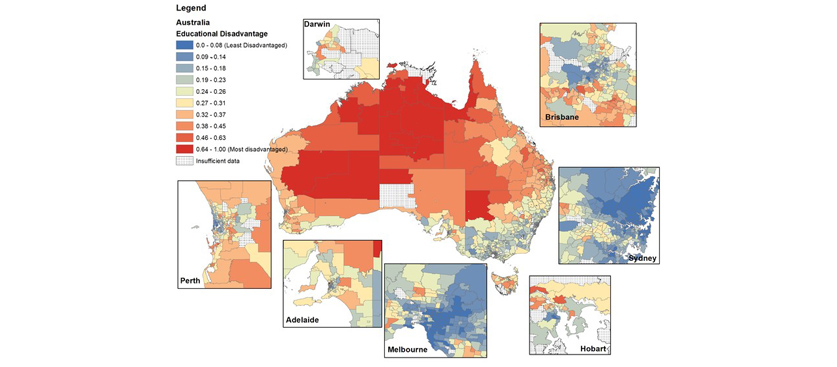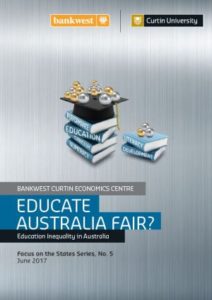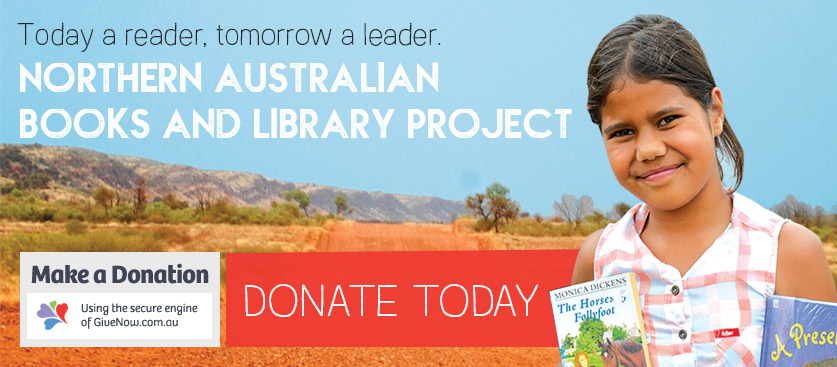
As our EOFY Northern Australian Books Campaign draws to a close, we would like to acknowledge all our wonderful supporters who donated the Aboriginal Literacy Foundation this year. The support far exceeded expectations and we are looking forward to the task of distributing resources among all those parents and educators who are passionate about educating the young people in their communities.
 Recently, Bankwest Curtain Economics Centre released a report mapping out areas of educational disadvantage around the country. They discovered that the areas of greatest educational disadvantage were in regional and remote areas of Australia’s North (WA, NT and Queensland). Alarmingly, the report found the most advantaged 10% of children in the NT experience the same level of disadvantage as the most disadvantaged children in the ACT. In the Northern Territory, “pockets of advantage, rather than disadvantage are the norm”, the report states.
Recently, Bankwest Curtain Economics Centre released a report mapping out areas of educational disadvantage around the country. They discovered that the areas of greatest educational disadvantage were in regional and remote areas of Australia’s North (WA, NT and Queensland). Alarmingly, the report found the most advantaged 10% of children in the NT experience the same level of disadvantage as the most disadvantaged children in the ACT. In the Northern Territory, “pockets of advantage, rather than disadvantage are the norm”, the report states.
Using data derived from the AEDC, ACARA, NAPLAN, Census and National Early Childhood Education and Care Collection, an area’s disadvantage was determined according to criteria such as parental economic resources, parental education and occupation, domestic stability, student mobility, and access to resources, I.e. Internet access.
In very remote communities, only 44.5% of families will have access to the internet. The report also found that only 35% of Indigenous children in the Northern Territory will go on to university. In the country’s least advantaged areas, only 49.4% of children are still studying at age 17, compared to 2.5% of students in areas of most least disadvantage. Of these early school leavers, not even half were found to be employed or in training.
To provide a snapshot of one such area; the town of Tanami, 644 km northwest of Alice Springs is ranked as the most disadvantaged area in the Northern Territory. School attendance is only 63.9% and the unemployment is 15.6% with youth engagement assessed at only 16.2%. Only 26.5% of families have internet access.
The educational disadvantage of Australia’s North was the driver for the Aboriginal Literacy Foundation’s Books and Library Project, which seek to reach over 200 schools in Northern Australia, including those in extremely remote areas. Participating schools are provided with books and library grants to be used for literacy resources and software.
56 regional and remote schools in the Northern Territory will be participating and we look forward to continuing our books roll-out throughout the coming months. One such case we heard of recently was that of a Stage 3 Remote school located at an outstation without road access for 5 months of the year. This one-teacher school had only 16 books in the classroom. In this case, we were able to send 300 books, with a library grant to follow.
Once again, we would like to thank our supporters who continue to donate great children’s books, hold fundraisers and book drives, volunteer for book sorting days – and allow us to have the financial capability to achieve our work.
If you would like to support our Northern Australian Books Project, please donate at Givenow – Australia’s only commission-free donation platform.

